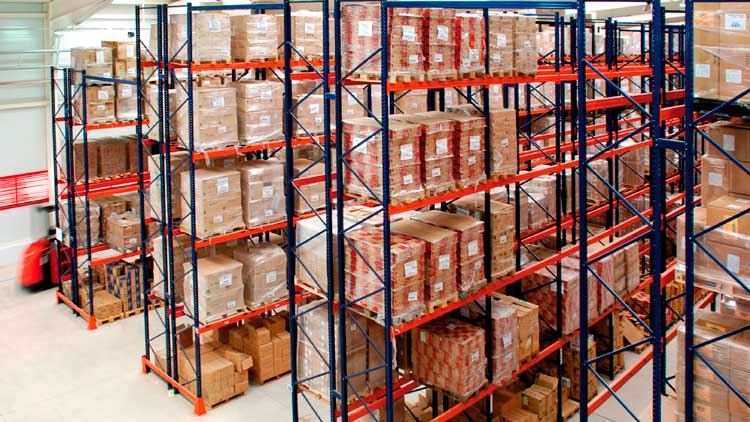Maximizing Warehouse Density for Specific Needs
As a warehouse operator constantly seeking ways to optimize space and efficiency, you’ve likely explored various storage solutions. One high-density option that stands out for specific inventory types is drive-in pallet racking. But what exactly is it, and is it right for your operation?

The Core Concept: Depth Over Direct Access
Unlike traditional selective pallet racking, where each pallet has its own dedicated space accessed from an aisle, drive-in pallet racking takes a fundamentally different approach. Imagine a structure where multiple pallets are stored deep within a single row, one behind the other, on parallel rails.
How Drive-In Pallet Racking Works
Structure: The racking system consists of upright frames connected by horizontal load beams, but crucially, the pallet rack beams support continuous rails running the entire depth of the bay.
Loading: A specialized, highly maneuverable forklift (often with guidance systems) drives directly into the lane created by the rails.
Storage: Pallets are placed on these rails, stored one after another, deeper into the lane. There are no aisles between pallet positions within the same row.
Access: Retrieval operates on the LIFO (Last-In, First-Out) principle. The last pallet loaded into the lane is the first one accessible. To reach a pallet stored deeper within the lane, the forklift operator must first remove all the pallets in front of it.

Characteristics of Drive-In Pallet Racking
High Density: This is the primary advantage. By eliminating numerous access aisles within the storage block, drive-in pallet racking significantly increases storage capacity per square foot compared to selective pallet racking – often by 60-75%.
LIFO Inventory Management: It inherently suits products with long shelf life, low SKU count per lane, or where batch rotation isn’t critical (e.g., seasonal items stored long-term, raw materials used in bulk).
Requires Specialized Handling: Operators need skilled forklift drivers with narrow-aisle or dedicated drive-in forklifts. Maneuvering deep into lanes requires precision.
Lower Selectivity: Accessing a specific pallet deep within a lane can be time-consuming, as it requires moving pallets in front of it.
Structural Considerations: The warehouse racking must be robust to withstand the impact potential from forklifts entering the lanes. High-quality components and proper installation are critical.
Drive-In vs. Drive-Through
Drive-In: Typically accessed from one end only. This is the most common configuration.
Drive-Through: Accessed from both ends, allowing for FIFO (First-In, First-Out) inventory management. Ideal for products with expiration dates where rotation is essential. Requires more space for the rear aisle.
Ideal Applications for Drive-In Pallet Racking
Bulk Storage of Homogeneous Products: Large quantities of the same SKU (e.g., beverages, canned goods, paper products, building materials).
Cold Storage Facilities: Where space is extremely expensive, maximizing density is paramount.
Seasonal Inventory: Items stored for long periods and shipped out in large batches.
Raw Materials: Stored in bulk for production lines.
Low SKU Velocity: Products that don’t require frequent individual pallet access.
Important Considerations Before Implementing
Inventory Profile: Is it truly high-volume, homogeneous, and LIFO-compatible?
Forklift Capability & Cost: Do you have, or can you acquire, the right forklifts and trained operators?
Throughput Needs: Can you tolerate the slower access times for deep-lane pallets?
Safety: Requires strict protocols, excellent lighting, and high-quality racking to minimize collision risks.
Cost: While offering density savings, the rack structure itself, specialized forklifts, and potential lower throughput can impact overall ROI. Compare carefully with other high-density options like push-back or pallet shuttle systems.
Conclusion
Drive-in pallet racking is a powerful tool in the warehouse operator’s arsenal for maximizing storage density. Its strength lies in storing large volumes of similar products where direct, immediate access to every single pallet isn’t the primary requirement. However, the trade-offs in selectivity, access speed, and operational requirements (specialized forklifts, LIFO) mean it’s not a universal solution.
Carefully evaluate your specific inventory characteristics, handling capabilities, and operational goals. If you have large volumes of homogeneous goods suitable for LIFO handling and space is your top constraint, drive-in racking could be the key to unlocking significant storage capacity within your existing footprint. Always consult with reputable racking manufacturers and warehouse design specialists to determine if it’s the optimal choice for your unique operation.





